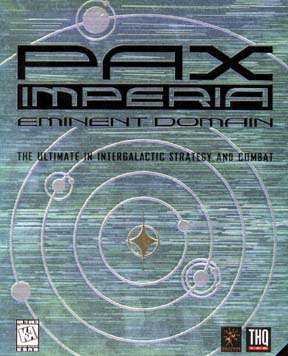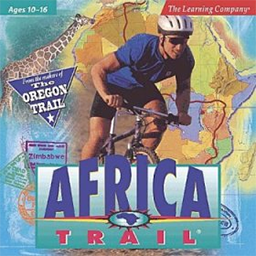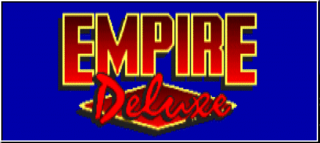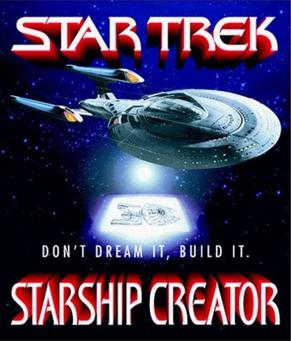
Doom is a first-person shooter game developed and published by id Software. Released on December 10, 1993, for DOS, it is the first installment in the Doom franchise. The player assumes the role of a space marine, later unofficially referred to as Doomguy, fighting through hordes of undead humans and invading demons. The game begins on the moons of Mars and finishes in hell, with the player traversing each level to find its exit or defeat its final boss. It is an early example of 3D graphics in video games, and has enemies and objects as 2D images, a technique sometimes referred to as 2.5D graphics.

Exile is a series of role-playing video games created by Jeff Vogel of Spiderweb Software. They were released as shareware titles for Macintosh and Windows systems. Exile III was also ported to Linux by a third party. There were four games released in the series. All of the games were later revived in the Avernum series. Common to all games in the Exile series are 2D graphics and basic sound. The graphics in the first versions of Exile I and II had simple textures, colours and outlines, which were then replaced in later versions with Exile III's graphics. The games are designed to be non-linear and long in gameplay length.

SimCity 2000 is a city-building simulation video game jointly developed by Will Wright and Fred Haslam of Maxis. It is the successor to SimCity Classic and was released for Apple Macintosh and MS-DOS personal computers in 1993, after which it was released on many other platforms over the following years, such as the Sega Saturn and SNES game consoles in 1995 and the PlayStation in 1996.
Harpoon is a series of realistic air and naval computer wargames based upon Larry Bond's miniatures game of the same name. Players can choose between either the Blue or Red side in simulated naval combat situations, which includes local conflicts as well as simulated Cold War confrontations between the United States and the Soviet Union. Missions range from small missile boat engagements to large deep sea battles, with dozens of vessels and hundreds of aircraft. The game includes large databases containing many types of real world ships, submarines, aircraft, and land defenses.

Age of Sail II is a 2001 computer wargame developed by Akella. It is the sequel to Age of Sail. It has similar historically accurate game play, and is enhanced with 3D graphics and a free-floating camera. Unlike the original Age of Sail, the sequel's maps are embellished with strategic landmasses. Age of Sail II portrays the fighting ships used from 1775 to 1820, and has a realistic combat engine. The game features a campaign which includes a full career ladder, or play one of the 100+ historical scenarios. The game also includes a map editor allowing players to create custom scenarios.

Pax Imperia: Eminent Domain is a real-time strategy video game. The game emphasizes empire building and customization. Pax Imperia is a Latin term, meaning "peace from empire". It is the sequel to the 1992 video game Pax Imperia.

Achtung Spitfire! is a 1997 computer wargame developed by Big Time Software and published by Avalon Hill. It is a turn-based air combat game taking place during the early half of World War II, including fixed-wing aircraft, air battles and operations by Luftwaffe, Royal Air Force and French Air Force in 1939–1943.

Afterlife is a god game released by LucasArts in June 1996 that places the player in the role of a semi-omnipotent being known as a Demiurge, with the job of creating a functional Heaven and Hell to reward or punish the citizens of the local planet. The player does not assign citizens to their various punishments and rewards since the game does this automatically. Instead, the player creates the infrastructure that allows the afterlife to function properly. Players are accountable for the job that they do because of their bosses, The Powers That Be, check in from time to time. The player also has the assistance of two advisors—Aria Goodhalo, an angel, and Jasper Wormsworth, a demon. Aria and Jasper provide warnings when things are going wrong with the afterlife, and offer tips on how to fix the problems.

Africa Trail is an educational computer game developed by MECC and published by The Learning Company. The gameplay resembles that of MECC's other "Trail" games, in which players must prepare for a long journey, choose their traveling companions, and make it safely to their destination. In Africa Trail, players must travel across Africa via bicycle. The game includes a Multimedia Resource Tool to allow players to make their own journal and presentation of the journey.

The Playroom is an educational video game published in 1989 for MS-DOS, Apple II, and Mac. The game was compatible with the TouchWindow utility. It was ported to the Amiga and FM Towns computers in 1992 and 1994 respectively and then remade for Microsoft Windows and Macintosh in 1995. It was designed for ages 3 to 6 manufactured by Broderbund. A follow-up game titled The Treehouse came in 1991 as well as a sequel to this game, called The Backyard in 1993.

Empire is a 1977 turn-based wargame with simple rules. The game was conceived by Walter Bright starting in 1971, based on various war films and board games, notably Battle of Britain and Risk. The game was ported to many platforms in the 1970s and 1980s. Several commercial versions were also released such as Empire: Wargame of the Century, often adding basic graphics to the originally text-based user interface.

Star Trek: Starship Creator is a computer-based vehicle simulation game developed by Imergy and released by Simon & Schuster Interactive in 1998 for both Microsoft Windows and Mac OS, based on the official license of the Star Trek franchise. Elements in the game were created in conjunction with the technical advisers for the series and films, such as Mike and Denise Okuda. The gameplay in Starship Creator allowed for the player to equip and crew a series of different starship classes from across the Star Trek universe, including those from both the various series and the film series. An expanded version was subsequently released as Star Trek: Starship Creator Deluxe in late 1999 which added further starships, missions and customization. The official website also contained downloads for the characters from the Star Trek: New Frontier series of books. Reception by critics for Starship Creator was negative, with criticism directed at the gameplay and graphics, and the suggestion was made that the game would only appeal to Star Trek fans. A sequel followed in 2000 entitled Star Trek: Starship Creator Warp II.

Warlords II is computer wargame released in 1993, and the second release in the Warlords video game series.

Grandmaster Chess is a 1992 chess video game for DOS and Macintosh developed by IntraCorp and its subsidiary Capstone that was focused on neural network technology and an artificial intelligence (AI) able to learn from mistakes.

Star Trek: Starship Creator Warp II is an American computer-based vehicle simulation game released by Simon & Schuster Interactive in 2000, as a sequel to Star Trek: Starship Creator (1998). The game is backwards compatible with its predecessor, and allows for ships to be imported into the multi-player mode of Star Trek: Deep Space Nine: Dominion Wars (2001). The game allows the user to create their own starships, crew them with personnel from the Star Trek universe, and send them on missions.

Harpoon is a computer wargame published by Three-Sixty Pacific in 1989 for DOS. This was the first game in the Harpoon series. It was ported to the Amiga and Macintosh.

Where in Time Is Carmen Sandiego? is a multiplatform video game where players have to travel through time to collect clues and the warrants necessary to capture Carmen Sandiego or her henchmen. The goal of this game is to track Carmen's villains through history and arrest them and ultimately arrest Carmen herself.

Writer Rabbit is a 1986 educational video game, part of the Reader Rabbit franchise. It was remade as Reader Rabbit 3 for MS-DOS compatible operating systems in 1993, then re-released for Microsoft Windows and Macintosh in 1994 under the title "Reader Rabbit 3 Deluxe!".

Reader Rabbit's Interactive Reading Journey is a 1994 video game released on the Windows and Macintosh systems. It is the sixth game in the Reader Rabbit franchise. Designed for ages 4 till 7, the game introduces the new main characters Mat the Mouse and Sam the Lion who accompany Reader. It was then re-released in 1997 under the title "Reader Rabbit's Interactive Reading Journey For Grades K-1", followed by another in 1998 titled "Reader Rabbit's Reading Ages 4–6" and a personalized version in 1999.

















